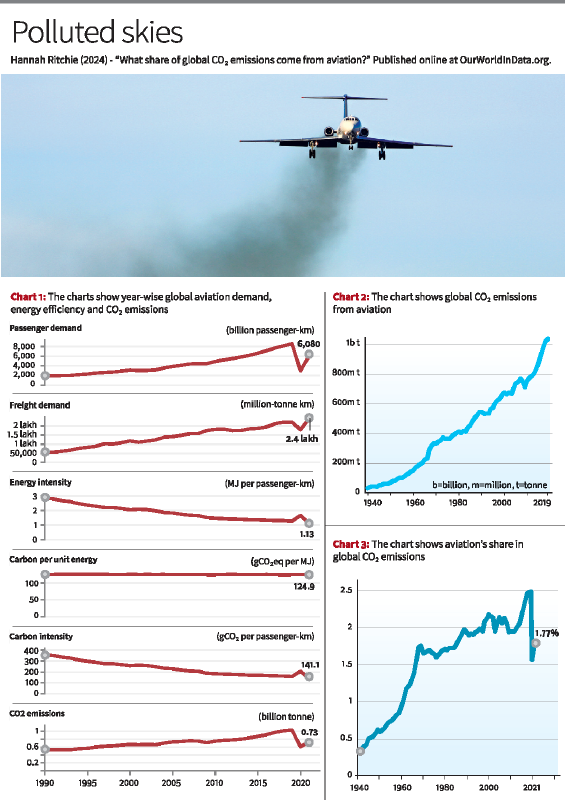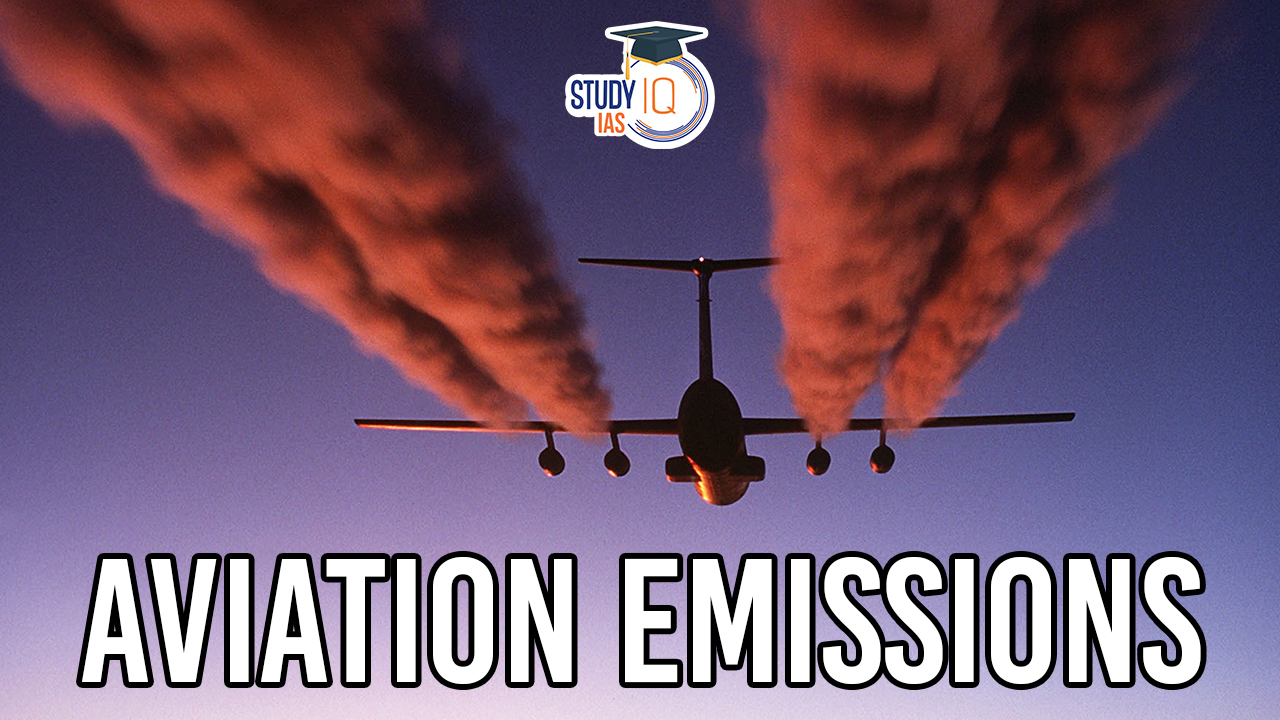Table of Contents
Context: Despite being highly carbon-intensive, aviation contributes to only 2.5% of global CO2 emissions.
Drivers of Change in Aviation Emissions
- The “Kaya identity” framework, which considers population, income, energy efficiency, and carbon intensity, is used to understand aviation emissions.
- Factors include aviation demand (passenger and freight kilometres), energy efficiency (energy used per km), and carbon intensity (fuel type determining CO2 emitted per unit of energy).
Metrics for Aviation Emissions (1990-2019, excluding pandemic)
- Historical Changes and Efficiency Gains:
- From 1990 to 2019, aviation demand for both passenger and freight travel has approximately quadrupled.
- Energy efficiency in aviation has improved significantly, with a reduction from 2.9 megajoules (MJ) per passenger-km to 1.3 MJ, making flying more than twice as energy efficient by 2019.

- Fuel Carbon Intensity Stagnation: The carbon intensity of aviation fuel has not improved since 1990; standard jet fuel is still in use, with biofuels making up only a small fraction of global demand.
- Carbon Emissions per Kilometre: In 1990, one passenger-kilometre resulted in the emission of 357 grams of CO2, which has more than halved to 157 grams by 2019.
- Overall CO2 Emissions: Due to increased efficiency, the doubling of aviation demand resulted in a doubling of emissions rather than quadrupling. Aviation emitted approximately 0.5 billion tonnes of CO2 in 1990, rising to about 1 billion tonnes by 2019.
- Long-Term Trends: The emissions quadrupled between the 1940s to mid-1960s.
- Aviation’s Share in Global Emissions:
- Aviation accounted for 2.5% of CO2 emissions from fossil sources and land use change in 2019.
- This share has fluctuated slightly but increased notably since 2010.


 SHANTI Bill 2025: India Opens Nuclear Se...
SHANTI Bill 2025: India Opens Nuclear Se...
 Revamp of MGNREGA Scheme 2025
Revamp of MGNREGA Scheme 2025
 National Energy Conservation Awards 2025
National Energy Conservation Awards 2025

























